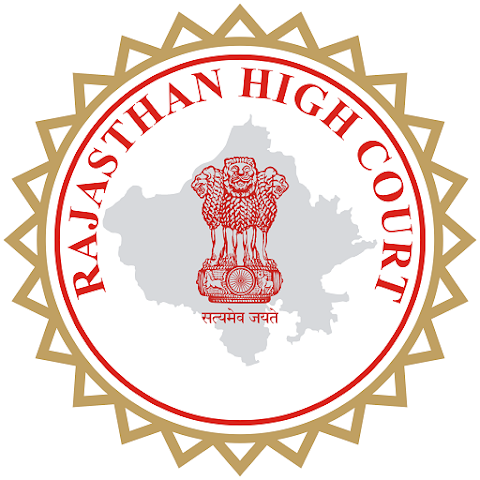History
Before year 1855 there were no regular courts in the State of Bharatpur. In year 1855 Sir Henry Lawrence, the Resident of Rajputana visited Bharatpur and appointed Major Morrison as Political Agent with full administrative powers. Consequently, judicial and revenue departments were created and tehsils and police stations were also established in State of Bharatpur. For the first time, magistrates at Deeg and Bharatpur city were appointed. Till the end of 19th century the State of Bharatpur for the purpose of judicial administration was divided into two districts viz., Deeg and Bharatpur, each in charge of a Nazim. British India procedure and laws were generally and gradually followed in judicial administration.
The number of courts in the State apart from the Council, which used to be the highest judicial body were: Sessions Judge Court at Bharatpur; Nizamat Courts at Bharatpur, Deeg and Bayana; Honorary Magistracy at Bharatpur; Tehsil Courts at Bharatpur, Nadbai, Bayana Rupbas Deeg and Kaman; Sub-Tahsil Courts at Kumher, Wer, Nagar and Pahari.
During the year 1935-36 apart from the above mentioned courts, two separate courts of Munsifs also functioned at Bharatpur and Deeg. A court of Munsif at Bayana was also created in November 1935. This system continued till 1942. On Ist August, 1942 a High court of Judicature was also established.
Later on also, the administration of justice was carried on in the State almost on the same lines. Ijlas Khas and Council remained the highest judical body, presided over by the ruler himself. There used to be one Civil and Sessions Judge, one Nazim and fine Tahsildars each at Gird, Rajakhera, Bari, Baseri and Sepau. At Sir Mathura there used to be a mannager who was invested with first class magisterial powers. There was a separate munsif at Bari. Tahsildars exercised second class magisterial powers and civil powers to try suits upto Rs. 500 in value. A High Court of Judicature was established in the year 1929, Capital punishment was prevalent.This pattern of judicial administration continued till Independence.
Before 17th March, 1948, each convenanting princely State of the Matsya Union had a High Court of its own. With the formation of the Matsya Union, the apex of the judicial structure in the covenanting States was integrated. There was one unified High Court for Matsya Union though the staff remained located at Alwar and Bharatpur till the Matsya Union was merged into Greater Rajasthan. In the Matsya Union, the High Court had, besided a Chief Justice, two puisne judges. In Bharatpur district there was one Sessions Judge at Bharatpur, One Additional Sessions Judge at Dholpur and five Munsifs, one each at Deeg, Bayana, Bharatpur, Bari and Dholpur.
After Independence Major Govind Singh had been appointed as a District Judge, Bharatpur and his tenure was from January, 1948 to November, 1951 and then after the present judicial system is going on .
About Bharatpur
Bharatpur- The ‘Eastern Gateway to Rajasthan’, was founded by Maharaja Suraj Mal in 1733 AD, it was once an impregnable well fortified city, carved out of the region formerly known as Mewat. The trio of Bharatpur, Deeg and Dholpur has played an important part in the history of Rajasthan. The place was named as Bharatpur after the name of Bharat, the brother of Lord Rama, whose other brother Laxman was worshipped as the family deity of the Bharatpur. The legends say the rulers Laxman’s name is engraved on the state arms and the seals. Bharatpur is also known as ‘LOHAGARH’. It is bound on the north by ‘Gurgaon’ district of Haryana, on the east by Mathura and Agra districts of Uttar Pradesh, on the south by Dholpur and Karauli, on the southern west by Jaipur and on the west by Alwar, all in Rajasthan. There is a forest called ‘GHANA’ means dense forest within a distance of about 5 Km. from District Head Quarter which remains green during the rainy season. Bharatpur Ghana’s plan was prepared in 1896 by the State Engineer for driving and confining the wild cattle in the dense forest with 250 species of migratory birds during the monsoon season and ‘winter’ season, which is famous all over India and world for being a great sanctuary of birds.
Bharatpur, Eastern gate of Rajasthan, is situated between 26° 22′ to 27° 83′ North Latitude and 76° 53′ to 78° 17′ East Longitude. It is situated 100 meters above the sea level. It is 184 km. away from Delhi in South-East. Northern Border of the district touches district Gurgaon of state Haryana, Eastern Border touches district Mathura, Southern Border touches district Agra of state Uttar Pradesh and district Dholpur of Rajasthan. It touches district Dausa in south-west and district Alwar in the North-West.
Bharatpur is accessible by road from Agra (55 km. or 34 miles) and Jaipur ( 185 km. or 115miles). It is 1,207 km. (750 miles) from Mumbai on the broad-gauge line of the Western Railway. All important places of Bharatpur are connected by roads.
Bharatpur experiences quite variations in its seasons. It is quite hot in summers and very cold in winters. In the summer season (April to June), the maximum temperature escalates to as high as 49° C, making the heat quite unbearable. The minimum temperature, on the other hand, comes down to somewhere around 27°C. Due to this reason people prefer to stay away from the bird sanctuary around this time. Monsoons, which start around end-June or early-July, bring some respite from the extreme climatic conditions of Bharatpur. During the arrival of the rains, the average temperature in Bharatpur comes down to quite an extent. However, the humidity is around 70% to 75%. Winter starts falling at Bharatpur in the month of October, where the maximum temperature falls down to about 27°C. The minimum temperature is noted to be somewhere around 3.5°C. Fog and mist is a normal feature of the weather in the month of January.



